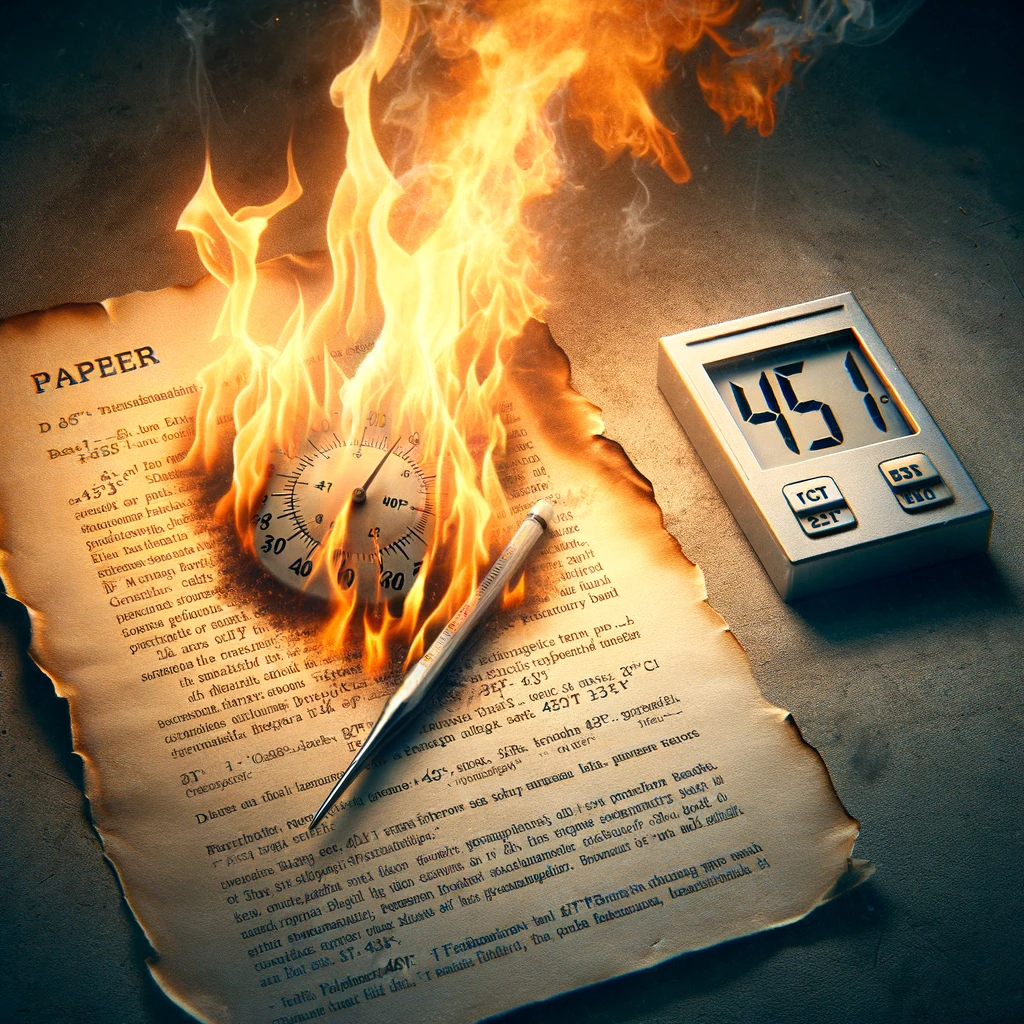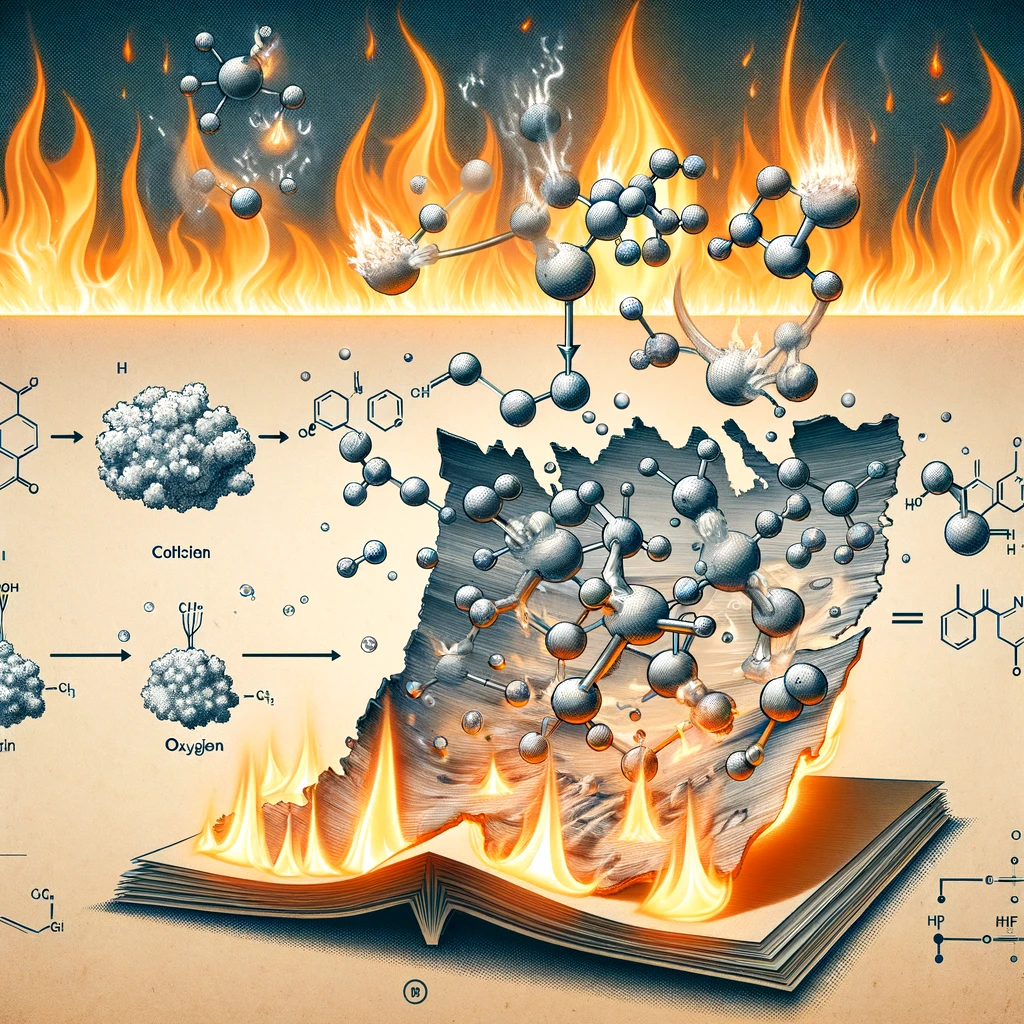Paper starts to burn at approximately 451 degrees Fahrenheit (233 degrees Celsius). This ignition temperature can vary slightly depending on the paper’s composition and the surrounding environmental conditions. The specific value of 451°F became widely recognized due to Ray Bradbury’s novel “Fahrenheit 451,” which uses this temperature as a central motif. Understanding the combustion temperature of paper is crucial not just in literary contexts but also in fire safety and prevention.

The Science of Paper Combustion
The science of paper combustion delves into the chemical reactions and physical processes that occur when paper reaches its ignition temperature and begins to burn. This phenomenon is a type of combustion reaction, a rapid oxidation process that releases energy in the form of light and heat.
Chemical Reactions in Combustion
When paper reaches around 451 degrees Fahrenheit (233 degrees Celsius), the heat energy overcomes the activation energy barrier, causing the cellulose molecules in the paper to break down. This decomposition releases volatile gases, primarily consisting of carbon dioxide, water vapor, and various organic compounds. The heat from the reaction causes these gases to ignite, producing the flames associated with burning paper.
Role of Cellulose
Cellulose, the main component of paper, is a polymer made up of glucose units. The strong bonds between these glucose units give paper its structure and strength. During combustion, these bonds break down, leading to the paper’s disintegration. The rate at which cellulose decomposes and releases flammable gases is crucial to the burning process and is influenced by the temperature and the specific conditions under which combustion occurs.
Factors Affecting Combustion
Several factors can influence the combustion of paper:
- Presence of Additives: Inks, dyes, and other substances can alter the combustion properties of paper, affecting its ignition temperature and the color of the flame.
- Environmental Conditions: Oxygen availability is crucial for combustion. In an oxygen-rich environment, paper burns more rapidly and completely. Conversely, in limited oxygen conditions, paper might smolder or char rather than burn brightly.
- Moisture Content: The water content in paper can significantly affect its ability to burn. Higher moisture levels require more heat to vaporize the water before combustion can occur, raising the ignition temperature.
Understanding the science of paper combustion is not only essential for fire safety and prevention but also provides insights into the broader principles of combustion reactions and material properties. This knowledge is crucial for various applications, from designing safer materials to investigating fire incidents.
Factors Influencing Paper’s Ignition Temperature
Several factors can affect the exact temperature at which paper ignites:
- Moisture Content: Paper with higher moisture content requires more heat to ignite because the water within needs to be evaporated before combustion can occur.
- Type of Paper: Different types of paper, such as glossy magazine pages or thick cardboard, have varying ignition temperatures due to differences in density, treatment, and additives.
- Environmental Conditions: Oxygen availability, air pressure, and ambient temperature can all influence the combustion process.
Practical Implications
Understanding the ignition temperature of paper has practical applications in various fields:
- Fire Safety: Knowing the combustion point of paper helps in assessing fire risks in residential and commercial settings, particularly in libraries, archives, and offices where paper is abundant.
- Waste Management: Safe practices for disposing of paper, especially when burning waste, require knowledge of its combustion properties to prevent accidental fires.
- Material Science: Engineers and designers can use this information when selecting materials for heat-resistant products or for items that will be in close proximity to heat sources.
While the specific ignition temperature of paper, 451°F, is a figure popularized by literature, it serves as a critical reference point in understanding how paper burns. This knowledge is essential for fire safety, environmental management, and material selection, demonstrating the importance of temperature in chemical reactions and combustion processes.

